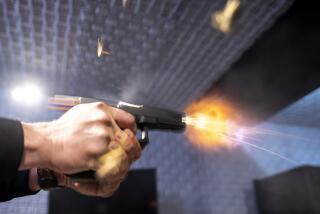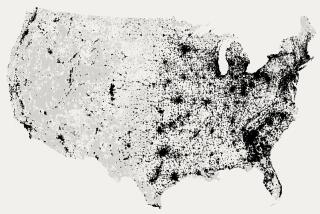Mass shootings in U.S. have tripled in recent years, FBI says
The number of sudden mass shootings in the United States has nearly tripled in recent years, the FBI said Wednesday, prompting the bureau to expand its work with state and local officials to identify potential gunmen before they attack.
In a study of active-shooter incidents, FBI officials said there were 160 cases from 2000 through 2013, with the numbers growing from an average of 6.4 incidents in the first seven years to 16.4 in the last seven years. Seventy percent of the shooters attacked in schools or workplaces, and 60% of the shootings happened so fast that they were over before the police arrived. In 40% of the cases, at least three people were killed, not counting the shooter.
“How do we prevent these?” said James Yacone, FBI assistant director. “We want to engage with these people early and start a dialogue, and get the person off the path to violence.”
Yacone was the top FBI official in Colorado in July 2012 when a gunman killed 12 people and 58 wounded others at an Aurora movie theater. Other incidents atop the FBI’s survey included the 2007 shooting at Virginia Tech (32 killed, 17 wounded); the 2009 Ft. Hood, Texas, shooting (13 killed, 32 wounded); and the Sandy Hook Elementary School shooting in Newtown, Conn. (27 killed, two wounded).
Authorities gave several reasons for the rise in mass shootings, including copycat killers and the availability of firearms.
Andre Simons, a supervisory special agent assigned to the FBI’s Behavioral Analysis Unit in Quantico, Va., said the bureau had the resources to help local authorities identify potential shooters, many of whom have “deeply held personal grievances” and often quietly start planning an “act of catastrophic violence.”
Simons said many were troubled at work or school, while others followed the news of shootings and sought similar notoriety. “The copycat phenomenon is real,” he said. “They often become inspired by past incidents.”
But they can be spotted early by police, ministers or teachers, and Simons said his unit received up to three requests a week from local authorities seeking help evaluating potential gunmen. “We want to get the person the help they need,” he said. “It’s our job to help them find alternatives to violence.”
The FBI report found a total of 1,043 casualties during those 14 years, with 486 killed and 557 wounded. All but two of the shootings involved single gunmen; six of the shooters were female; in nine cases the shooters killed family members first; and five gunmen in four shootings remain at large. The study excluded gang and drug violence.
Twitter: @RickSerranoLAT
More to Read
Start your day right
Sign up for Essential California for news, features and recommendations from the L.A. Times and beyond in your inbox six days a week.
You may occasionally receive promotional content from the Los Angeles Times.







